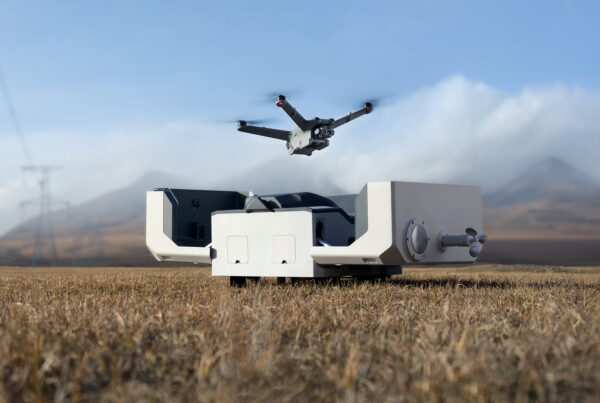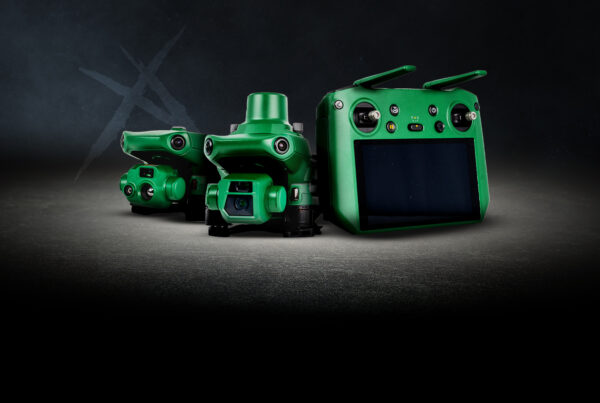
Cybersecurity is a high-priority item for any business, regardless of size. As operations become increasingly interconnected across multiple platforms, software, and systems, there is a greater risk of compromised information. When implementing a drone program, you will need to connect the fleet to your networks, and third-party apps, which is why having a strong IT infrastructure is so important.
Why is cybersecurity so important? What are the risks?
There are already many laws in place that protect user data and mandate encryption, from limiting online tracking of personal information to PCI and HIPAA compliance for online transactions and health information. Needless to say, encryption is necessary to maintain the security of sensitive information, regardless of the industry, use, and intent. A strong cybersecurity strategy isn’t just for government UAV programs—the reality is that all organizations should have proper security protocols for any network or device used in daily operations.
As your organization prepares to implement and integrate a new drone program, keeping cybersecurity top of mind should be a priority. Drones are able to capture and process large amounts of data at once—they can also be equipped with communication platforms or payloads. Because UAVs need to connect to online networks and third-party platforms to transfer data, they are susceptible to data leaks and hacking. Drones can act as front-end sensors for an organization’s IoT environment; if your drones are not properly secured, your entire network could be at risk. Having a network security program, as well as taking the right steps to ensure proper encryption will guarantee your UAVs are as protected as possible.
Your drone could be susceptible to several risks; here are a few you should be prepared for:
- GPS Spoofing – This is where a hijacker intercepts the drone’s GPS signal and inputs alternative location coordinates. You can mitigate this by ensuring every drone has a designated return-to-home (RTH) address.
- Botnet Attacks – A group of internet-connected devices can infiltrate weak systems and steal data or perform DDoS attacks on the drone.
- Distributed Denial of Service (DDoS) – Usually performed by botnets, a DDoS attack can disconnect the drone from the pilot or shut it down completely so it can’t perform its tasks.
- Downlink Intercept – Grants an unauthorized user to access transmitted data between the drone and the controller. This is why it’s important to use encrypted channels so that sensitive flight data like pictures, footage, and flight paths can’t be intercepted during transfer to the base station.
How can I protect my UAV fleet and mitigate cybersecurity risks in the field?
The first step to having a secured drone program is to look for platforms that offer encrypted communication. Encryption is the act of transforming plain-text data into an unintelligible form that can only be accessed with the use of a password or decryption key. Without encryption, it is fairly easy for anyone to access your drone’s communication systems and send erroneous commands. If your drone is compromised, then it can be steered off course, crashed, or stolen.
The next step is to ensure your drone’s Wi-Fi access point is secured with a strong password so it can’t be compromised. Without strong password protection, an unauthorized user can tap into the drone’s camera feed and have access to live flight data, location, and other information.
The purpose of a drone program is usually to make outside operations and data collection more efficient. While secure management of company devices is simple when they are connected to a business’s internal networks, it becomes difficult to ensure the security of any device or drone when out in the field and connected to outside networks.
We recommend establishing VPNs for field devices– this will help with data encryption even if your particular platform doesn’t have it. Another step you can take as an organization is to provide your team with phones or mobile devices that already have the proper flight software downloaded. By doing so, you can limit unauthorized app downloads on company devices that can connect to and jeopardize the drone.
Other steps you can take to ensure security include:
- Staying up to date with the latest firmware releases and manufacturer bug fixes of your drones.
- Having guidelines to determine strong passwords for the base station application.
- Using anti-virus software for your drone controller.
- Having a VPN service to encrypt your connection if your drone model doesn’t already have encryption.
- Limiting the devices that can connect to the base station.
- Ensuring the “Return to Home” (RTH) mode is enabled to recover the drone in case of a hijacking.
Foolproofing: Training & Maintenance
An ironclad cybersecurity system requires ongoing maintenance and consistent training of personnel. Organizational IT environments are complex, but they are only as secure as the people that use the systems make them. This means that if your personnel isn’t trained to make security a priority, your drone program and your entire network might be at risk, regardless of how many security protocols you have in place. Once your drone program is live, you should develop company policies that outline security protocols, including training and regular maintenance of your UAV fleets, like firmware updates.
Drones can provide plenty of benefits to organizations like large asset management, data capture, and more efficient workflows. UAV technology is in the early adoption stage for enterprise use and there haven’t been any major hacks or ransomware attacks like with other technologies, however, this doesn’t mean drones aren’t susceptible.
Implementing security protocols for a drone program isn’t complicated if you know what you need to be prepared for. Having a strong IT infrastructure should be a part of any organization’s strategy, and having a well-designed cybersecurity process for your UAV program should be one of your organization’s top priorities. This is why we always recommend having your IT team as stakeholders during a drone implementation project.
If you need a UAV solution that has encrypted communication as part of its features, our experts can help. Connect with them here.




